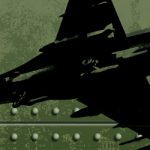From East to West: Buying Surplus NATO Systems Can Boost Central European Member Nations
Central European countries need to speed up military modernization to move from Warsaw Pact-era systems to NATO platforms to be able to face a resurgent Russia and rising expectations from Brussels and Washington.
However, traditional procurement practices are too slow and costly for the near-term threat. Instead, acquiring surplus military hardware from US and European armed forces at a fraction of the new cost seems to be an attractive alternative for Central European defence ministries.
From a capability gap perspective, regional NATO members require 400-500 tanks, 48-60 combat aircraft and over 100 artillery systems from allied inventories.
Today: Soviet weapons against the Russian threat
In March 1999, three Central European countries – Poland, Czech Republic, and Hungary – joined NATO. Five years later the Baltic States, Bulgaria, Romania, Slovakia and Slovenia followed.
While these countries have begun to transform their militaries as they re-orient training, doctrine and equipment, the countries remain ill-equipped to confront new challenges posed by an aggressive and less predictable Russia. Expectations are rising in Washington, as well. The Trump administration has redoubled pressure on NATO members to spend more on defence.
Central European NATO members are playing modernization catch-up after enjoying a peaceful moment in their history. Governments focused on trying to attain Western European standards of living, but neglected the technical modernisation of their armed forces. Consequently, they face the threat of a reinvigorated Russia with equipment largely from the Soviet era.
Tomorrow: NATO hardware integration on local terms
Due to increased concern about Russia’s aggressive behaviour, and strong pressure from the Trump administration, most Central European countries now have new strategies to meet NATO’s 2% of GDP defence spending benchmark.
While spending may rise, actual defence capabilities may not actually increase enough as true modernization remains unaffordable for most countries if traditional procurement plans are followed. Yet supplementing new defence systems with the procurement of American and Western European second-hand weapon systems can help close that gap.
Overall, Avascent estimates demand in Central Europe for second-hand military hardware is approximately 400-500 main battle tanks (MBTs), 48-60 combat aircraft and more than 100 artillery systems.
Avascent estimates demand in Central Europe for second-hand military hardware is approximately 400-500 main battle tanks (MBTs), 48-60 combat aircraft and more than 100 artillery systems.
Such an approach presents opportunities alike for suppliers of surplus military hardware and Central European armed forces seeking upgraded military capabilities at a reasonable price with a range from 10% to 25% of the original acquisition value.
The armed forces would quickly introduce relatively modern weapons into military service for far less than the price of new weapons. Such upgrades promise to be quicker too as equipment is upgraded and retrofitted, rather than manufactured anew.
From a potential supplier point of view, countries like Poland and Romania present an opportunity for additional revenue from maintenance and upgrade services of delivered weapon systems. Farther into the future, it could also be seen as a starting point to develop new relationships oriented toward modernizing the region’s NATO militaries well into the coming decades.
More capability in the air and on the ground – for less
Central European armed forces face current capability gaps due to outdated tanks, artillery, and aircraft – a point underscored by recent joint US exercises that field modern American equipment alongside older European systems.
Central European armed forces face current capability gaps due to outdated tanks, artillery, and aircraft – a point underscored by recent joint US exercises that field modern American equipment alongside older European systems.
Some nations are pathfinding this approach and are active operators of NATO-standard surplus equipment. For instance, Poland operates second-hand US Navy Oliver Hazard Perry-class frigates, along with Kobben-class submarines and Leopard 2A4 and 2A5 MBTs, as well as C-130 Hercules transport aircraft and M-ATV wheeled armoured vehicles.
Aside from Poland, Estonia uses second-hand CV-90 infantry fighting vehicles, XA-180 and XA-188 armoured personnel carriers; the country recently joined Finland in procuring used K9 Thunder howitzers. Romania operates used F-16A/B Fighting Falcon and C-130 aircraft, Gepard VSHORAD system, Cougar, M-ATV, MaxxPro vehicles, and Type 22 frigates.
The land forces of Bulgaria, the Czech Republic, Estonia, Hungary, Poland, Romania, and Slovakia could procure Leopard 2 or the M1A1 Abrams tanks to replace fleets of T-72 MBTs (or even vintage T-55s in Romania’s case, a tank whose design is nearly 60 years old).
Notable deals are already underway, though supply risks outstripping demand in Poland’s case. Warsaw is eyeing additional used Leopard 2 MBTs, though few are currently available on the market. Poland and other Central European countries know the Abrams MBT well due to Operation Atlantic Resolve that rotates American combat teams across the region.
For all the focus on armour, artillery remains paramount – as Russian forces have shown in Ukraine. Acquiring self-propelled howitzers with standard NATO 155-mm calibre such as PzH 2000, M109, or K9 Thunder could further shift Central European forces away from Soviet-era artillery systems operated by Bulgaria, the Czech Republic, Hungary, Slovakia, and Romania.
Unmanned aerial vehicle (UAV) such as the MQ-1 Predator could be a valuable option for Latvia and specifically for Poland, which is struggling with substantial delays in the implementation of current UAV programmes.
Apart from land platforms, the region’s NATO-member air forces could follow a similar procurement strategy by acquiring used platforms, such as the F-16, JAS 39 Gripen, or Eurofighter Typhoon. As with its land forces modernization, Poland is evaluating used options for the air domain.
It recently rejected the idea of an F-16A/B procurement as “not economically justified.”[1] Yet it is still keen on modernization and the F-16 C/D versions may emerge as an alternative to replace Su-22 and MiG-29 aircraft.
This is likely to be more affordable than used JAS 39 or Typhoon fighters, in the context of the nation’s ambitious defence modernization programme.
Besides Poland, the Romanian Air Force will most likely buy a second squadron of second-hand F-16 by 2020 to supplement its ex-Portuguese F-16MLU aircraft. Slovakia is another CE country which is also interested in leasing or procuring second-hand aircraft. In this case, the JAS-39 seems to be a better fit due to plans for the creation of a joint Czech-Slovak combat aircraft unit.
There are unmanned options, as well. A second-hand unmanned aerial vehicle (UAV) such as the MQ-1 Predator could be a valuable option for Latvia and specifically for Poland, which is struggling with substantial delays in the implementation of current UAV programmes. Moreover, experience operating MQ-1s would quickly offer the Polish Armed Forces substantial experience and perhaps inform future unmanned platform procurements.
Buying surplus: Practical and effective
To support local industry, a partial solution would be to integrate these firms into maintenance and modernisation programs focused on the newly acquired surplus defence systems.
Central European armed forces face a difficult juggling act of growing operational requirements due to Russian aggression, NATO commitments and limited defence budgets. Consequently, acquiring carefully selected second-hand weapon systems presents an increasingly relevant paradigm for modernisation that accommodates all three factors.
From the customer perspective, it is also worth mentioning that the procurement of surplus weapon systems should be a relatively speedy process in contrast to standard procurement practices. This helps defence suppliers, which get additional sustainment customers as well as operational homes for otherwise mothballed equipment.
Defence ministries, meanwhile, could quickly increase key military capabilities with relatively modest costs. Potentially thorny matters involve technology transfer and offset investments that are typically associated with defence export deals.
To support local industry, a partial solution would be to integrate these firms into maintenance and modernisation programs focused on the newly acquired surplus defence systems.
Fundamentally, acquiring surplus defence equipment is a practical solution to a very difficult set of policy and procurement challenges that NATO’s Central European members are finally coming to grips with. The sooner such steps can be taken, the greater the impact each individual nation can have on strengthening the entire alliance in the face of established and emerging threats.
[1] Bartosz Kownacki, Secretary of State at the Polish Ministry of National Defence





